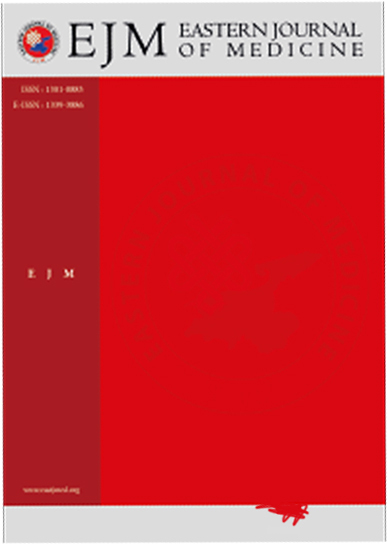Safety in Laparoscopic Gynecologic Surgery: A Comprehensive Evaluation of Complications at a Tertiary Center
Ugurcan Zorlu1, Batuhan Turgay2, Mohammad İbrahim Halilzade1, Özlem Moraloğlu Tekin11Department of Obstetrics and Gynecology, Ankara City Hospital, Ankara2Department of Obstetrics and Gynecology, Ankara University Faculty of Medicine, Ankara
INTRODUCTION: To evaluate demographic profiles, surgical indications, and complication rates associated with laparoscopic gynecologic procedures for benign conditions, while identifying risk patterns across different surgical types.
METHODS: This retrospective study included 172 patients who underwent laparoscopic hysterectomy (n = 52), hysterectomy with oophorectomy (n = 48), or cystectomy/oophorectomy (n = 72) at a tertiary center. Data on demographics, indications, complications, and outcomes were analyzed. Postoperative complications were categorized using the Clavien-Dindo classification. Chi-square and t-tests or MannWhitney U tests were used for comparisons (SPSS v25.0, p < 0.05).
RESULTS: Patients in the hysterectomy with oophorectomy group were older (mean age 53.0 ± 7.0) and had higher comorbidity (70.8%) and medication use (61.5%). Uterine fibroids were the leading indication in hysterectomy groups, while ovarian cysts were predominant in the cystectomy/oophorectomy group. The hysterectomy with oophorectomy group showed significantly higher rates of bladder injury (4.2%, p = 0.032), ureter injury (6.2%, p = 0.043), and ICU admission (10.4%, p = 0.022). Grade IIIb and IV complications were also more frequent. Subgroup analysis of endometrioma cases (n = 32) confirmed elevated complication risk in extensive procedures.
DISCUSSION AND CONCLUSION: While laparoscopic surgery is effective for benign gynecologic conditions, complication rates vary by procedure type and patient complexity. Thorough preoperative evaluation and surgical expertise are vital, especially in advanced cases. vNOTES and other minimally invasive innovations may offer safer alternatives for select patients.
Manuscript Language: English














